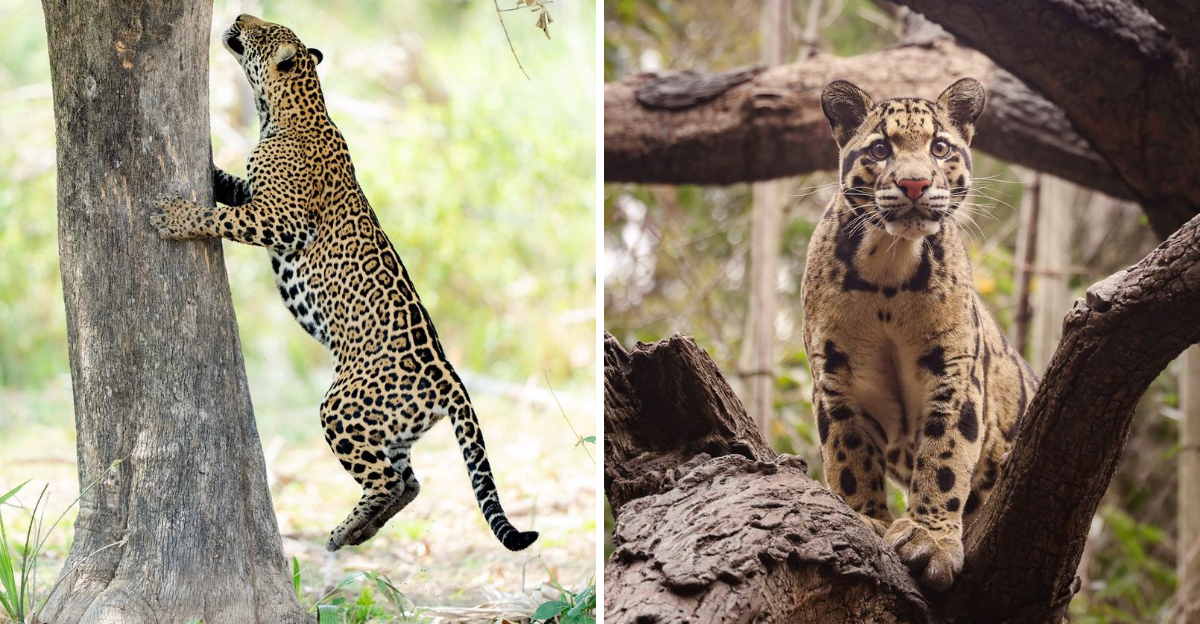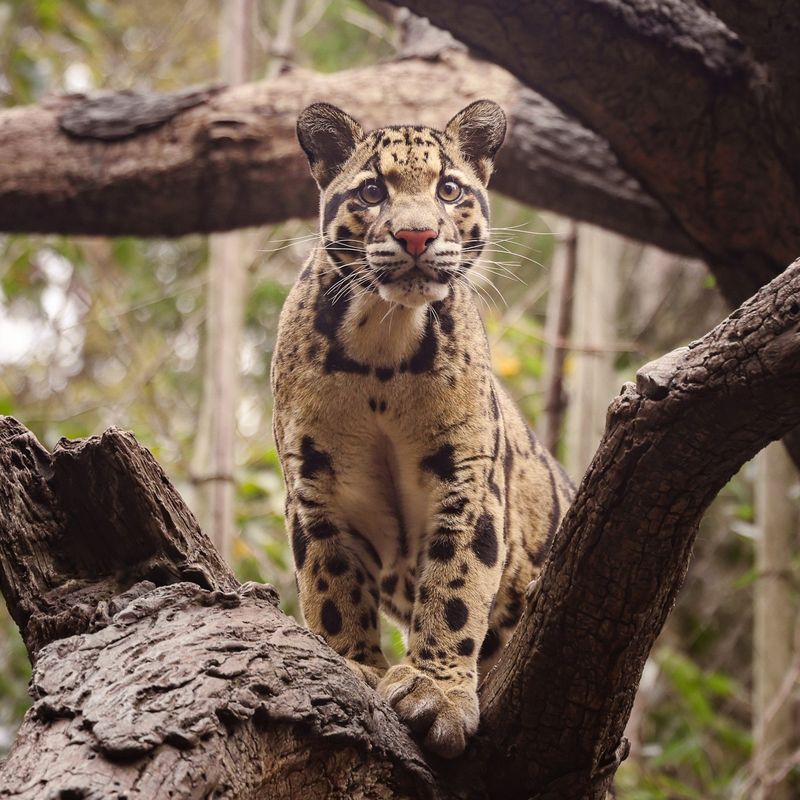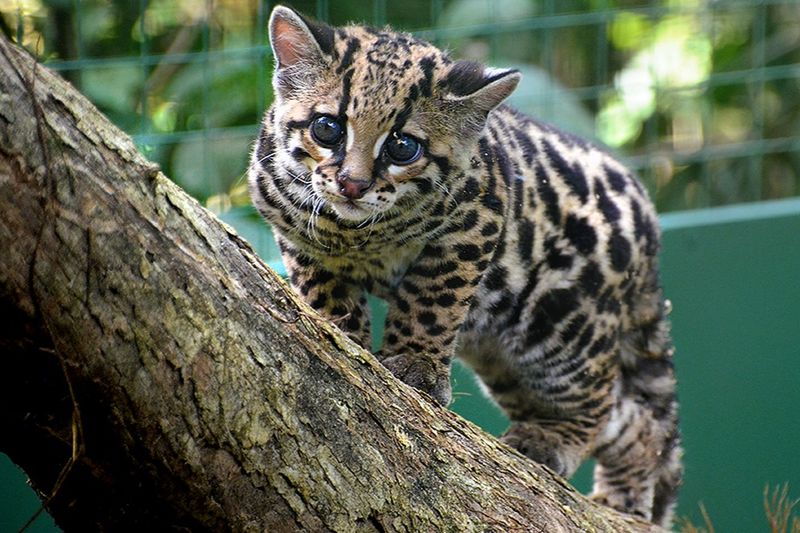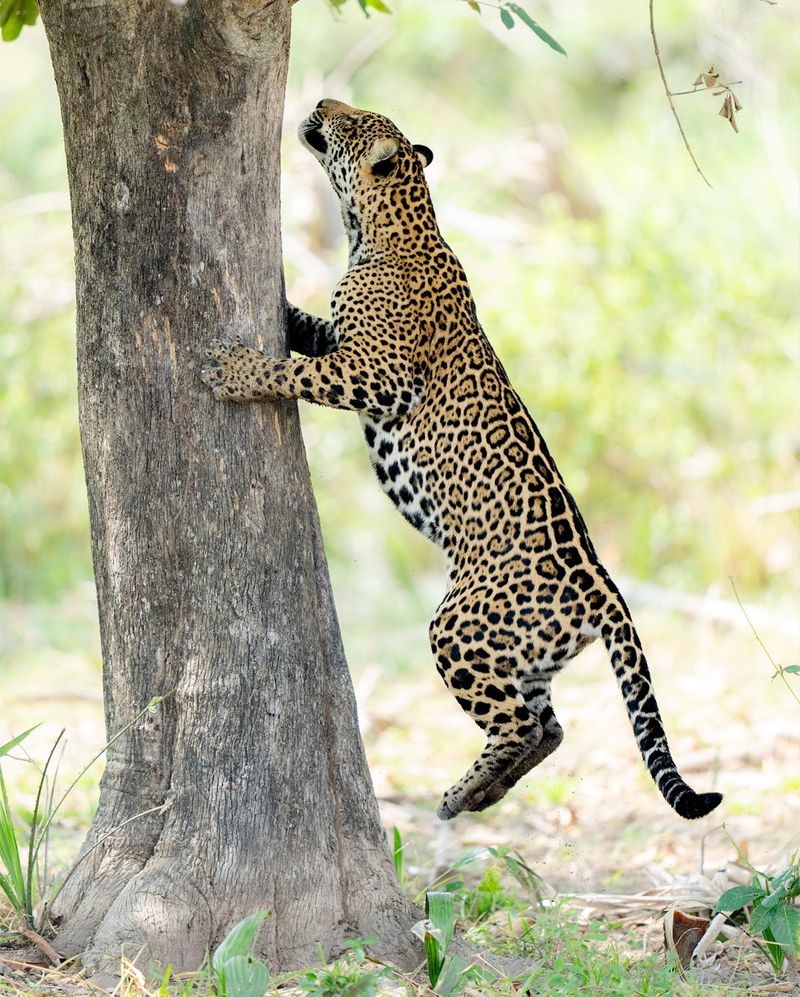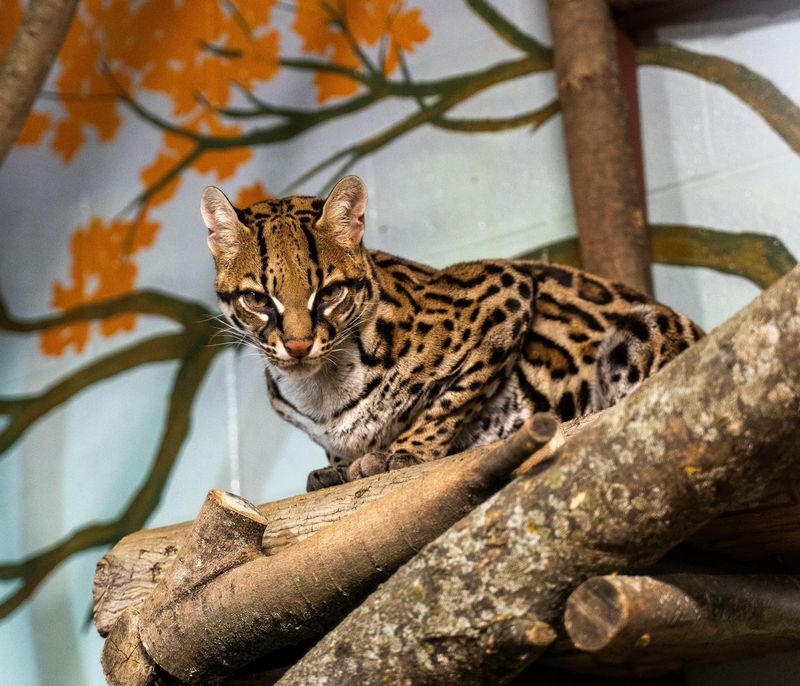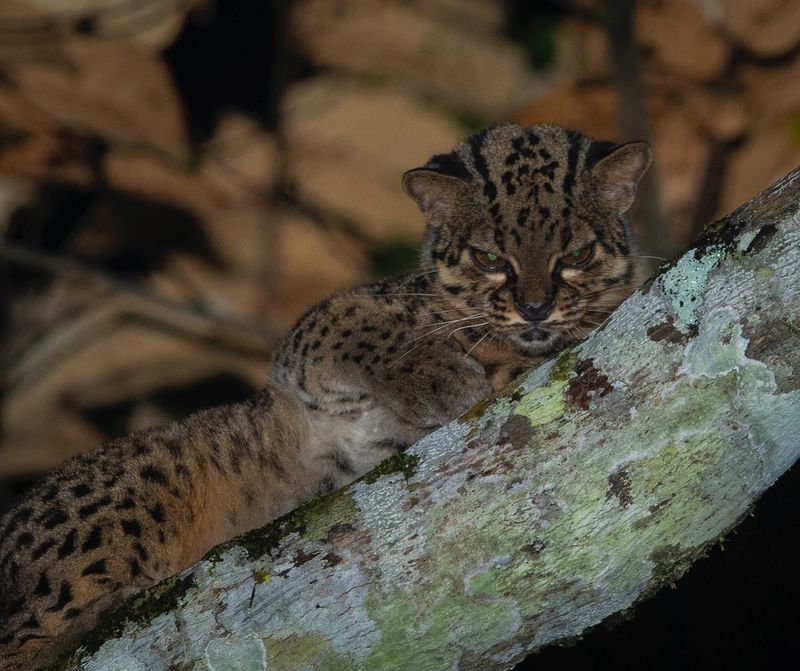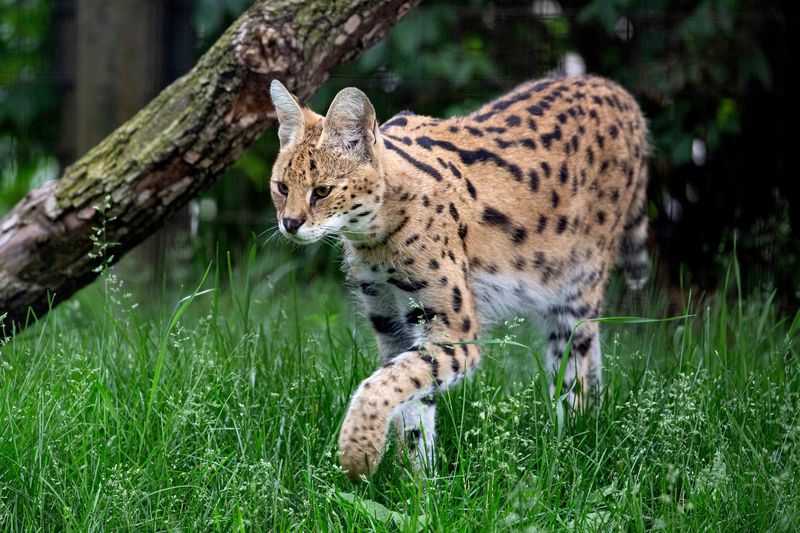📖 Table of Content:
When it comes to agility, balance, and raw climbing talent, few creatures on Earth can rival the wild cats that call treetops their playground. In the dense jungles of Southeast Asia, the tangled forests of South America, and even the watery edges of monsoon-swollen rivers, certain feline species have evolved into masters of the vertical world.
These aren’t your average house cats tiptoeing across the furniture. These are nature’s elite climbers—silent, flexible, and fiercely skilled predators that defy gravity with every leap and paw placement. Whether they’re hunting in the canopy, napping on high branches, or escaping predators below, these wild cats prove that evolution truly favors the agile.
Ready to meet the high-wire artists of the feline world? From the acrobatic margay to the mighty leopard hauling prey skyward, here are eight wild cats that turn treetops into their personal kingdom.
1. Clouded Leopard
With the shortest legs relative to body size among cats, clouded leopards possess extraordinarily flexible ankle joints that rotate 180 degrees. This unique adaptation allows them to descend trees headfirst like squirrels! Their broad paws and sharp, curved claws act like natural climbing hooks.
These medium-sized cats boast the longest canine teeth proportional to skull size of any modern cat, earning them the nickname “modern-day saber-tooth.” Native to Southeast Asian forests, clouded leopards spend most of their lives in trees, hunting, resting, and even sleeping on branches.
Fun fact: A clouded leopard can hang upside-down from branches using just its hind feet, freeing its front paws to grab prey!
2. Margay
Margays take tree living to extraordinary levels with ankle joints that rotate 180 degrees, allowing them to run down tree trunks headfirst. These small spotted cats from Central and South America are so perfectly adapted to arboreal life that some individuals rarely touch the ground!
Their oversized paws work like natural snowshoes on branches, while their exceptionally long tail provides perfect balance during acrobatic leaps between trees. Margays have been observed hanging by one hind foot while manipulating prey with both front paws.
Unlike most cats, margays can jump horizontally between trees rather than needing to descend to the ground first. They’re among the few cats known to mimic prey sounds to lure victims closer.
3. Leopard
Masters of the vertical world, leopards regularly haul prey twice their weight up into trees to keep it safe from scavengers. Their incredible strength comes from powerful shoulder muscles specifically evolved for climbing. Watch a leopard scale a vertical trunk and you’ll witness fluid grace that seems to defy physics.
These spotted cats often choose to rest on branches during daylight hours, their dappled coats providing perfect camouflage against dappled sunlight. Unlike many cats, leopards are comfortable swimming and frequently climb trees overhanging water.
A leopard’s climbing ability varies by region – African savanna leopards typically climb more frequently than their Asian forest counterparts, who have more ground cover for hiding prey.
4. Jaguar
Don’t let their stocky build fool you – jaguars are surprisingly adept tree climbers when motivated. As the largest cats in the Americas, these powerhouses combine raw strength with unexpected agility. Their massive head and jaw muscles, evolved for crushing turtle shells and caiman skulls, don’t hamper their climbing abilities at all.
Jaguars particularly enjoy climbing in flooded forests, where trees provide dry resting spots. Young jaguars are especially playful in trees, often practicing hunting techniques from elevated positions.
Unlike leopards who regularly store caught prey in trees, jaguars typically only climb to escape floods, avoid insects, or survey their territory. Their shorter tails compared to other climbing cats indicates they’re not exclusively arboreal specialists.
5. Ocelot
Ocelots transform into gravity-defying acrobats after sunset. These medium-sized spotted cats move through the canopy with such silent precision that sleeping birds rarely detect them until it’s too late. Their oversized eyes gather available moonlight, giving them superior night vision for navigating branches in the darkness.
What makes ocelots remarkable climbers is their precise foot placement – they can remember exactly where to step on a familiar route through trees. This spatial memory allows them to follow the same hunting paths night after night.
Researchers tracking ocelots have discovered individuals with specific preferred trees for resting, hunting, and even playing. Though comfortable in trees, ocelots split their time between ground and canopy hunting, making them versatile predators.
6. Marbled Cat
Often mistaken for a miniature clouded leopard, the marbled cat possesses climbing abilities that would make Olympic gymnasts jealous. About twice the size of a house cat, these secretive felines from Southeast Asian forests have abnormally long tails, often equal to their body length, providing exceptional balance during canopy movements.
Their ankle flexibility rivals margays and clouded leopards, allowing headfirst descents that few other mammals can manage. Marbled cats have been observed hanging by their hind legs while reaching for prey with their front paws.
So specialized are they for tree living that researchers rarely spot them on the ground. Their beautiful marbled coat pattern breaks up their outline against dappled forest light, making them nearly invisible when motionless on a branch.
7. Fishing Cat
Contrary to what their name suggests, fishing cats are surprisingly capable tree climbers despite their semi-aquatic lifestyle. These stocky, water-loving felines from South and Southeast Asia have partially webbed feet, yet can scale trees when necessary to escape floods or predators.
Their muscular build and powerful claws allow them to climb trees overhanging water bodies, creating perfect fishing platforms. Unlike specialized arboreal cats, fishing cats climb with more deliberate movements, carefully testing branch strength before committing their weight.
Researchers have observed mother fishing cats using trees as nurseries during monsoon seasons when ground nests would flood. Their ability to adapt to both aquatic and arboreal environments showcases the remarkable versatility that has helped cats survive across diverse habitats.
8. Serval
Though primarily ground-dwellers of African grasslands, servals display remarkable climbing abilities when motivated. Their extraordinarily long legs – proportionally the longest of any cat – give them incredible jumping power, allowing them to launch nearly 10 feet vertically to catch birds or climb trees.
Servals use trees as observation posts rather than primary hunting grounds. Their slender build and relatively light weight make tree climbing easier compared to heavier cats. During grassland fires or to escape predators, servals can rapidly scale trees that would challenge many other savanna animals.
Young servals are particularly playful tree climbers, using elevated positions to practice pouncing techniques. Their distinctive large ears help maintain balance by detecting subtle shifts in air pressure during precarious climbing maneuvers.
